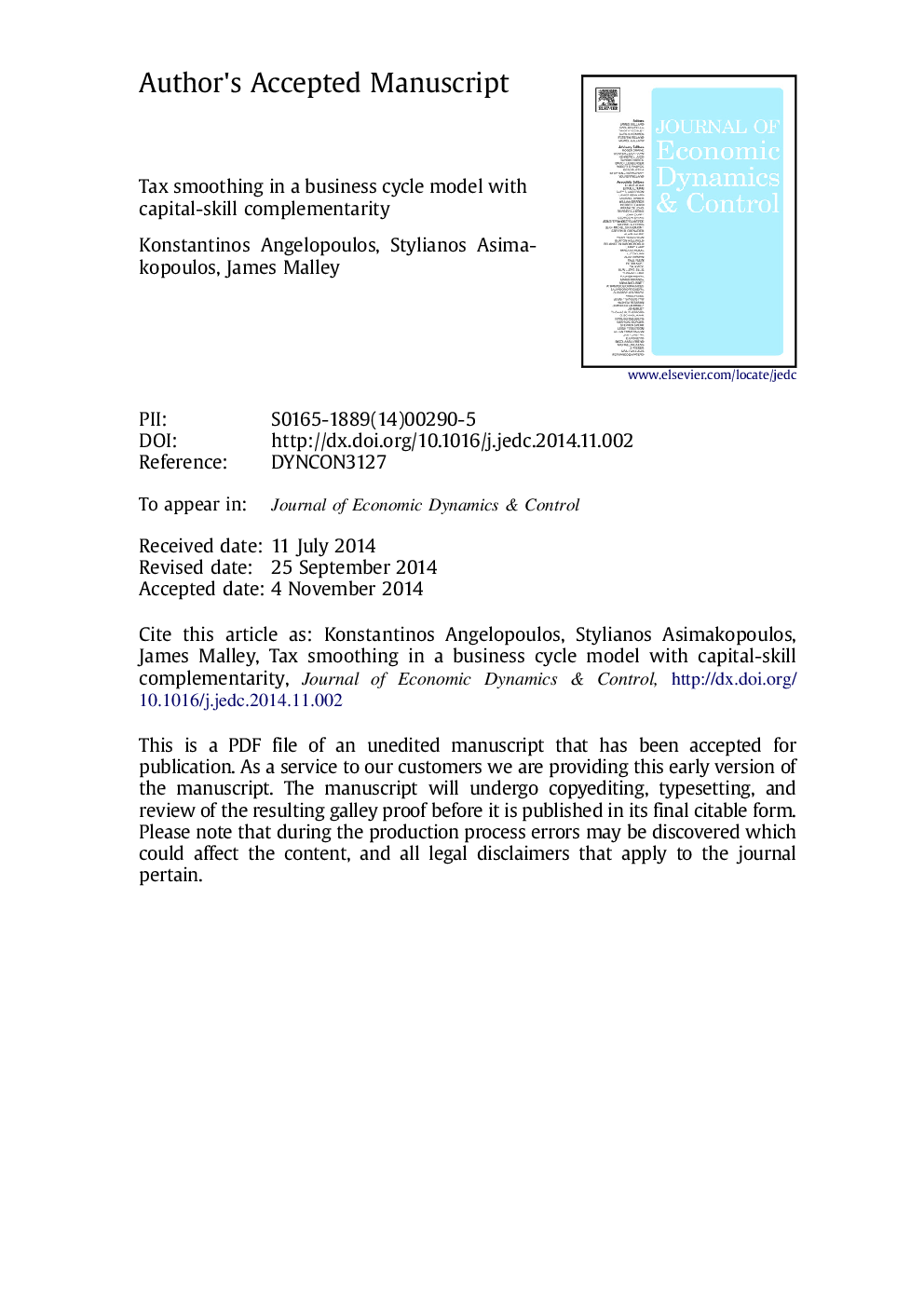| Article ID | Journal | Published Year | Pages | File Type |
|---|---|---|---|---|
| 5098372 | Journal of Economic Dynamics and Control | 2015 | 48 Pages |
Abstract
This paper undertakes a normative investigation of the quantitative properties of optimal tax smoothing in a business cycle model with state contingent debt, capital-skill complementarity and endogenous skill acquisition under technology and public expenditure shocks. We find that skilled and unskilled labour tax smoothing maintain quantitatively under externalities and exogenous shocks in skill acquisition, as well as when the relative skill supply is exogenously determined. We further find that the government finds it optimal to reduce both the size of the wedge between the marginal rates of substitution and transformation in skill attainment in the long-run and the standard deviation of this wedge over the business cycle. This is achieved by subsidising skill creation and taxing both types of labour income.
Related Topics
Physical Sciences and Engineering
Mathematics
Control and Optimization
Authors
Konstantinos Angelopoulos, Stylianos Asimakopoulos, James Malley,
